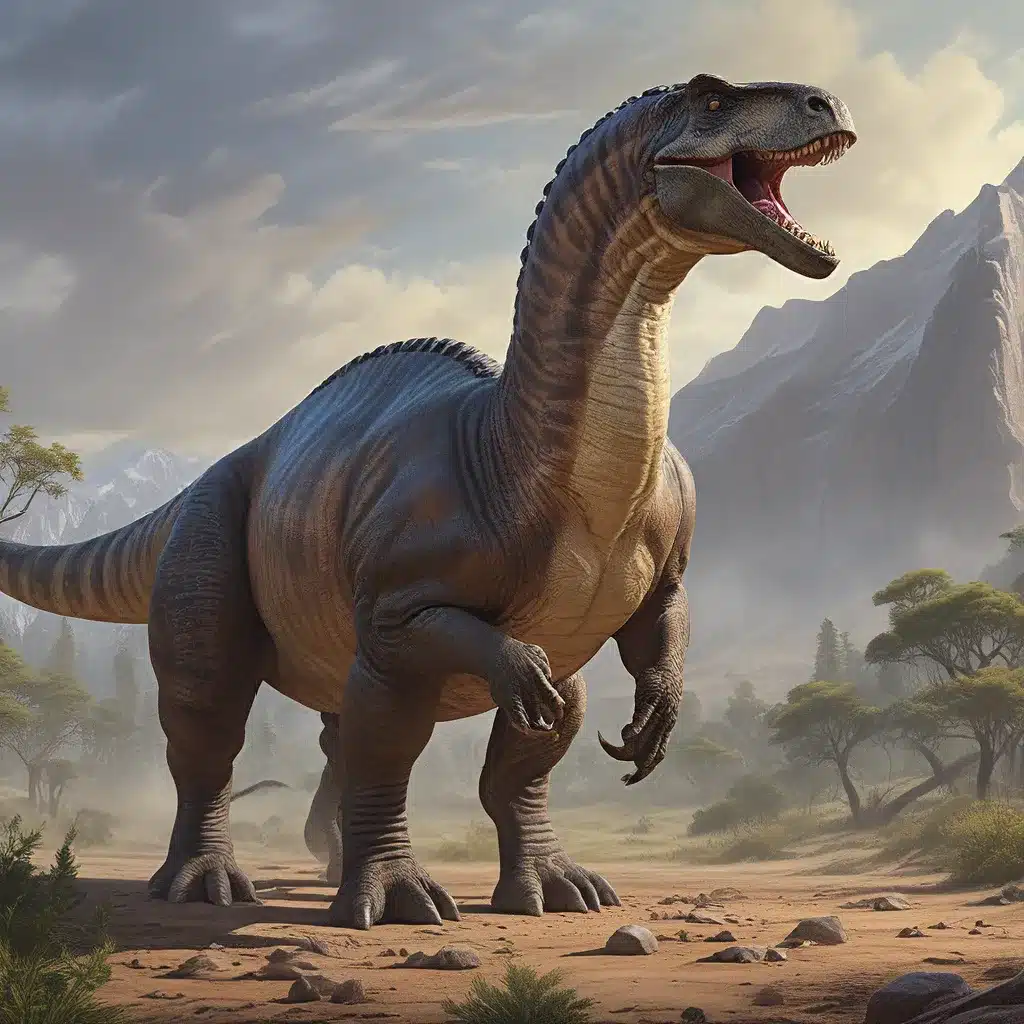
Unearthing the Giant Herbivore: Unraveling the Mysteries of the Camarasaurus
The Camarasaurus is a captivating member of the long-necked, plant-eating dinosaurs known as sauropods. This colossal creature roamed the ancient landscapes of North America during the Late Jurassic period, approximately 155 to 145 million years ago. As one of the most well-represented sauropod species in the fossil record, the Camarasaurus has been the subject of extensive research, shedding light on the intricate evolutionary adaptations and behaviors of these enigmatic giants.
Paleontological excavations have unearthed numerous Camarasaurus specimens, providing invaluable insights into their physical characteristics, dietary preferences, and ecological roles. These findings have challenged preconceptions and fueled ongoing debates surrounding the evolutionary development and adaptations of this remarkable sauropod.
Fossil Discoveries: Piecing Together the Camarasaurus Puzzle
The Camarasaurus was first discovered in 1877 by renowned paleontologist Othniel Charles Marsh, who named the genus based on the distinctive “chambered vertebrae” that characterize its spinal column. Since then, numerous Camarasaurus fossils have been uncovered across the western United States, particularly in the Morrison Formation, a geological deposit renowned for its rich abundance of Late Jurassic fossils.
Detailed anatomical studies of Camarasaurus fossils have revealed a number of intriguing features that shed light on their evolutionary adaptations. For instance, the wide, U-shaped skull and flat, spoon-shaped teeth of the Camarasaurus suggest that they were well-equipped to consume a diverse range of plant matter, from tough, fibrous vegetation to more delicate foliage.
Additionally, the robust, pillar-like limbs and massive body size of the Camarasaurus indicate that they were well-adapted to support their immense weight and navigate their environment with ease. The presence of bony plates embedded in the skin of some Camarasaurus specimens has also sparked discussions about their potential role in thermoregulation or defense against predators.
Evolutionary Insights: Tracing the Camarasaurus Lineage
The Camarasaurus is believed to have evolved from earlier sauropod lineages, such as the Cetiosaurus and Patagosaurus, which inhabited the Jurassic landscapes of Europe and South America, respectively. Fossil evidence suggests that the Camarasaurus shared common ancestral traits with these earlier sauropods, including their distinctive long necks and tails, as well as their herbivorous dietary preferences.
However, the Camarasaurus also possessed unique evolutionary adaptations that set it apart from its predecessors. For instance, the Camarasaurus’ large, rounded skull and robust, pillar-like limbs are thought to have been adaptations that allowed them to effectively process and transport the large quantities of vegetation required to sustain their massive size.
Intriguingly, the Camarasaurus seems to have coexisted with other sauropod species, such as the Diplodocus and Apatosaurus, during the Late Jurassic period. This suggests that these diverse sauropod genera may have occupied distinct ecological niches, allowing them to thrive in the same environment without direct competition for resources.
Behavioral Insights and Paleoenvironmental Reconstructions
Ongoing research into the Camarasaurus has also provided valuable insights into their behavioral patterns and the paleoenvironmental conditions they inhabited. For instance, the discovery of Camarasaurus trackways has shed light on their locomotive abilities, revealing that they were capable of traversing a variety of terrains, from dense forests to open grasslands.
Furthermore, the analysis of Camarasaurus coprolites (fossilized dung) has offered clues about their dietary preferences and digestive processes. These findings suggest that the Camarasaurus had a diverse and adaptable diet, capable of consuming a wide range of plant matter, from ferns and gymnosperms to early angiosperms.
The Lost Kingdoms website delves deeper into the paleoenvironmental reconstructions of the Late Jurassic period, offering insights into the climatic conditions, vegetation patterns, and faunal communities that the Camarasaurus and other sauropods would have encountered. These reconstructions help to contextualize the evolutionary adaptations and ecological roles of these iconic dinosaurs.
Ongoing Debates and Future Directions
While our understanding of the Camarasaurus has vastly improved thanks to the tireless efforts of paleontologists, there are still many unanswered questions and ongoing debates surrounding this remarkable sauropod.
One area of active discussion revolves around the social and reproductive behaviors of the Camarasaurus. Some researchers have proposed that they may have lived in herds or exhibited complex social structures, while others argue that they were more solitary in nature. The discovery of potential nesting sites and egg clutches has also sparked debates about their parental care strategies and nesting behaviors.
Additionally, there is ongoing discussion about the evolutionary relationships between the Camarasaurus and other sauropod genera, as well as the specific adaptations that allowed them to thrive in the Late Jurassic ecosystem. Advances in imaging technology and biomechanical modeling are expected to provide new insights into the locomotion, feeding mechanics, and physiological adaptations of the Camarasaurus in the coming years.
As our understanding of the Camarasaurus continues to evolve, it is clear that this enigmatic sauropod will continue to captivate the minds of paleontologists, evolutionary biologists, and enthusiasts alike. The ongoing exploration and analysis of Camarasaurus fossils promise to uncover even more fascinating insights into the evolutionary saga of this colossal herbivore and its role in the ancient ecosystems of North America.


